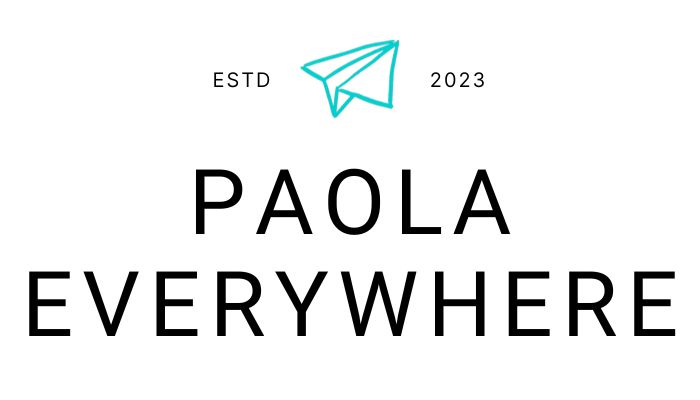Overlooking the Atlantic Ocean, the Hassan II Mosque is Casablanca’s most iconic landmark. Designed by French architect Michel Pinseau and built by hundreds of Moroccan artisans, it blends tradition and innovation. Its vast spaces, marble walls, carved ceilings and retractable roof make it one of the most impressive mosques in the world. It’s also the only mosque in Morocco open to non-Muslim visitors. Often the only part of Casablanca seen by travellers during a tour to Morocco, a visit here lets you step inside Morocco’s spiritual heart and admire a unique masterpiece rising above the sea.
Table of Contents
The History of the Hassan II Mosque in Casablanca
The Hassan II Mosque stands where Casablanca’s Orthlieb Pool once stood, a municipal seawater swimming pool, right on the edge of the Atlantic Ocean. King Hassan II imagined a mosque that would bring together earth, sky and sea. His vision was to create a spiritual and architectural landmark that would bring pride to Morocco for generations.
PLAN YOUR TRIP TO MOROCCO
The easiest way to stay connected in Morocco is with a Holafly eSIM: unlimited data for maps, navigation and instant sharing on WhatsApp without worrying about your data running out.
Travelling in Morocco without insurance is never a good idea, as healthcare is private. If you’re travelling independently, a Heymondo travel insurance protects you from unexpected costs and lets you explore with peace of mind.
Use my links to purchase your eSIM and travel insurance with an exclusive reader discount!
Construction of the Hassan II Mosque began in 1986 and took seven years. The project involved more than 10,000 Moroccan artisans who carved marble, painted cedar ceilings and set colourful zellige tiles by hand.
The construction progressed at an extraordinary pace because King Hassan II had two great fears: that he might die before seeing the mosque completed, and that if he did, no one would finish it after him.
Eventually, the mosque was inaugurated on 30 August 1993, the eve of the Prophet Muhammad’s birthday, as a tribute to both God and the Moroccan people. Covering nine hectares, it includes a vast prayer hall, a medersa, a library, a museum and even baths.
For such a huge construction project, costs estimated at around 585 million euros were widely debated in Morocco, as the government lacked sufficient funds for such an ambitious project. Apparently, two-thirds of the total cost was financed by public subscription, with twelve million people donating to the cause. At the same time, King Hassan II personally covered part of the cost.

Architectural Highlights of the Hassan II Mosque: A Masterpiece of Faith, Art and Engineering
The Hassan II Mosque is a unique blend of tradition and technology, combining Islamic artistry with modern engineering. Built partly over the Atlantic Ocean on reinforced concrete stilts, it stands as the only mosque in the world constructed above the sea. A seawall in front softens the power of the waves, allowing worshippers to pray between earth and water.
Inside, the design reflects Morocco’s religious openness. The mosque has three naves like a Christian cathedral and a raised women’s gallery reminiscent of a synagogue, symbolising respect for different faiths. Every detail celebrates harmony and coexistence through architecture.
The interior is a triumph of craftsmanship. Granite columns engraved in gold record the genealogy of King Hassan II, whose family, like Jordan’s royal line, traces its descent from the Prophet Muhammad. The ceiling, carved and painted from fragrant cedarwood, showcases the finest artistry of Moroccan artisans.
Beyond its beauty, the mosque is a technical marvel. Its concrete structure is earthquake-resistant. The lower level once held a natural tidal pool. The combination of advanced construction and artistic mastery makes the Hassan II Mosque one of the most remarkable feats of modern Moroccan architecture.
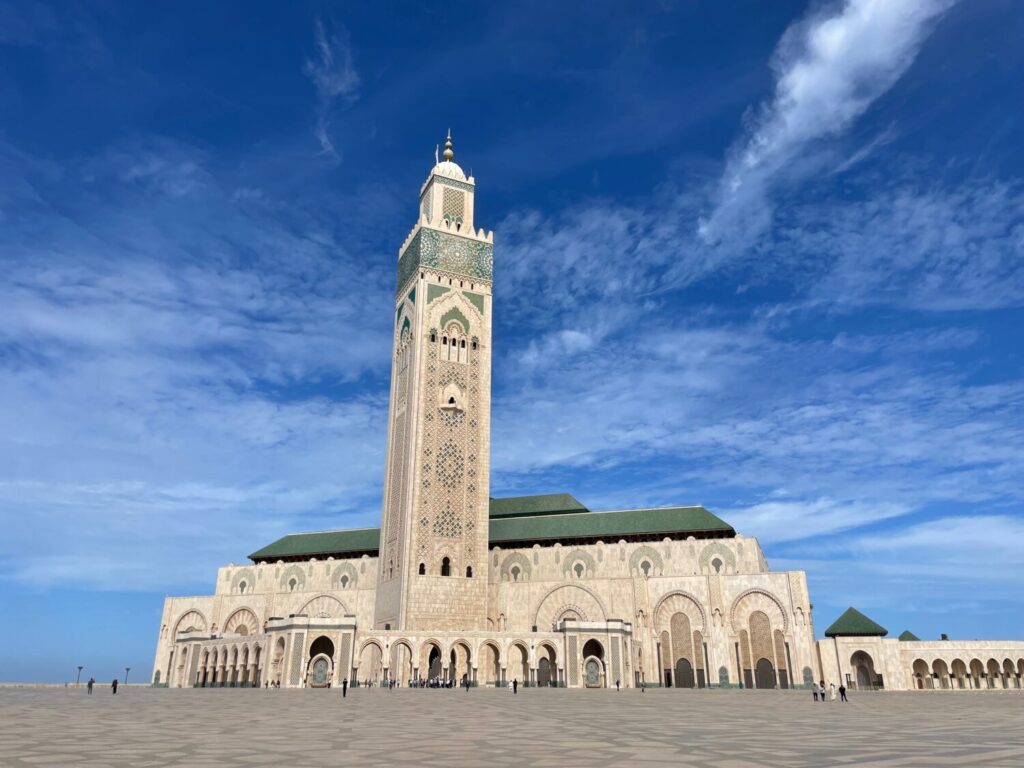
The Esplanade and Oceanfront Setting of the Hassan II Mosque in Casablanca
The first thing you see when approaching the Hassan II Mosque is its vast marble esplanade overlooking the Atlantic Ocean. This open courtyard stretches across nine hectares. Here, all visitors take photos among fountains, columns and decorative arches. The geometric patterns of the paving, combined with the ocean breeze, create a space that feels both majestic and peaceful.
The esplanade can host thousands of worshippers and visitors, blending function with beauty. Its symmetrical layout and carefully aligned marble slabs echo the harmony found inside the mosque itself. It reminded me a bit of the Sheikh Zayed Grand Mosque in Abu Dhabi. The area is also dotted with green spaces, giving a sense of calm that contrasts with the lively energy of Casablanca beyond its walls.
Access to the esplanade is restricted, as barriers surround the entire complex. Guards open the entrances to the esplanade only for those with a valid reason to enter, such as visiting the mosque, the hammam, or other facilities within the grounds.
From the Corniche, the mosque appears to float above the sea. It’s a visual illusion because the foundations are partly over the water, with a seawall protecting it from the Atlantic waves. In the morning, the mist drifting in from the sea adds a touch of mysticism to the Hassan II Mosque, softening its outlines.
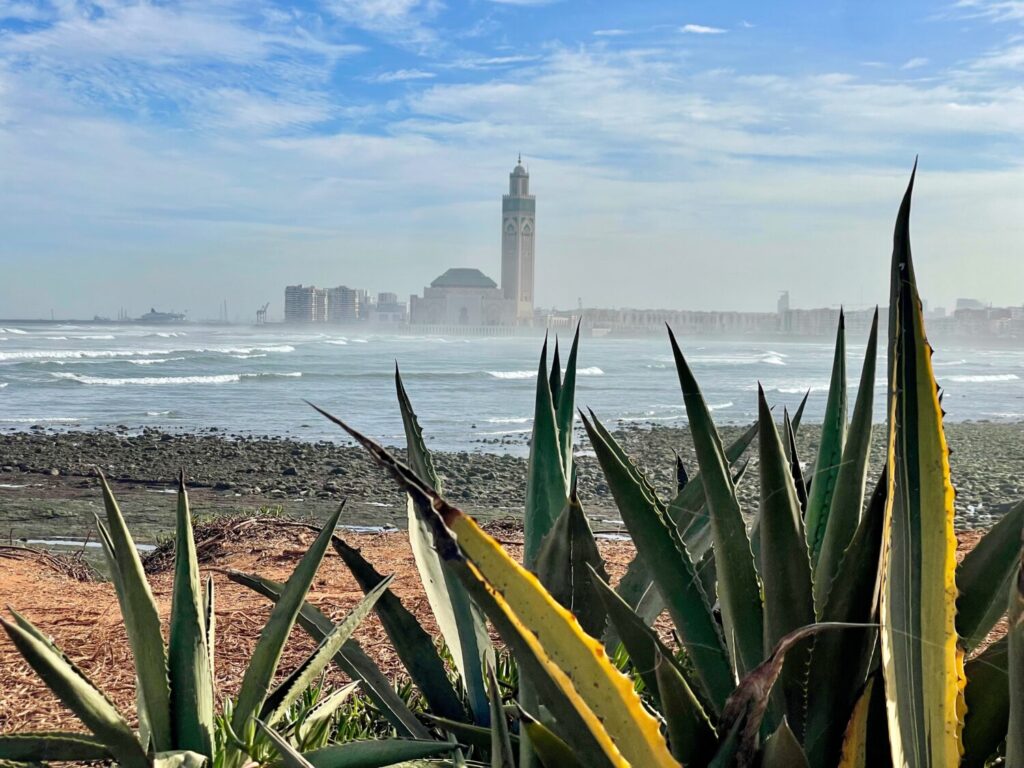
Inside the Prayer Hall of the Hassan II Mosque
As a symbol of Morocco’s openness and coexistence, the prayer hall incorporates elements inspired by other faiths. Covering two hectares, it features elements reminiscent of synagogues, such as the women’s galleries, and those of Christian cathedrals, with its three grand naves.
The floor of the main prayer hall is divided into three aisles and can host up to 20,000 men. The cedarwood-carved mezzanines above are reserved for women and can accommodate around 2,500 worshippers.
The walls are made of granite and hand-decorated plaster mixed with marble dust, while fifty chandeliers illuminate the space. The ensemble creates a warm and majestic atmosphere that reflects Morocco’s artistic heritage.
The Monumental Doors of the Hassan II Mosque
The monumental doors of the Hassan II Mosque, made of bronze and titanium, reflect the excellence of Moroccan craftsmanship. Eighteen in total, they are tall, richly decorated and built to withstand the salty ocean air.
Each door offers a grand entrance to the inner galleries, where intricate zellige patterns and finely carved woodwork showcase the artistry and elegance that define this architectural masterpiece.
The Marble Floor of the Hassan II Mosque
The floor of the Hassan II Mosque is made entirely of marble from central and southern Morocco, chosen for its beauty and durability. When the mosque is not expected to be full for long periods, staff remove the carpets so visitors can admire the stunning marble patterns beneath, a masterpiece too beautiful to keep hidden.
The entire prayer hall is equipped with underfloor heating, using pipes installed beneath the marble surface. However, it is used only a few times a year, as winters in Casablanca are mild.
Two narrow channels run along the floor, allowing water to flow gently through the hall. This creates a sense of freshness and symbolises the connection between the mosque, nature and the elements.
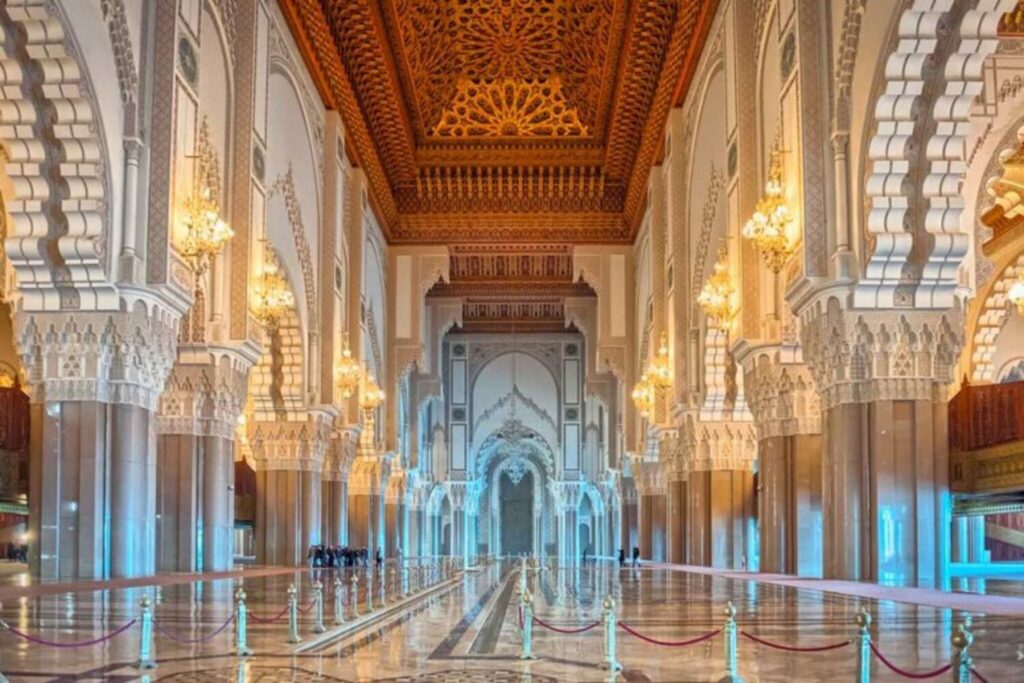
The Retractable Roof of the Hassan II Mosque
The retractable roof of the Hassan II Mosque is one of its most spectacular features. Weighing over 1,100 tonnes, it slides open in just five minutes and closes in seven. It allows sunlight and fresh ocean air to fill the vast prayer hall.
During the hot summer months, the roof is opened to bring in a refreshing breeze. The central section of the ceiling glides smoothly apart, revealing a large rectangular opening that turns the hall into an open-air sanctuary.
When the roof is open, the atmosphere inside completely changes. Colours shift, light dances across the marble floor, and a pleasant coolness spreads through the space. The beauty of the mosque becomes even greater, as worshippers and visitors can look up to the open sky. This view symbolises the divine connection between humanity and the heavens. It’s also embody the King’s vision of a place where faith, architecture and nature meet in harmony.
The Minaret of the Hassan II Mosque: A Beacon of Faith over Casablanca
The minaret is a key architectural feature of every great mosque. It’s the tower from which the call to prayer traditionally resonates across the city. At the Hassan II Mosque, this tower reaches 210 metres, making it the tallest minaret in the world. Completed in 1993 along with the mosque itself, it is in a refined Moroccan-Andalusian style that combines harmony, balance and intricate decorative details.
Visible from many parts of Casablanca, the minaret stands as a proud symbol of faith and national identity. At night, a green laser beam shines from its summit, pointing directly towards Mecca. This feature transforms the minaret into a luminous beacon of faith to the spiritual heart of the Muslim world.
The Ablution Hall of the Hassan II Mosque
Beneath the main prayer hall lies the vast ablution hall, where worshippers perform ritual purification before prayer. Covering 4,800 square metres, it contains 41 marble fountains shaped like lotus flowers, a symbol of purity in Islamic tradition.
The men’s and women’s halls are identical in size, with the same fountains and decorations. They differ only in colour: green mosaics for men and blue for women. The copper chandeliers illuminating the space were crafted in Fes, adding a warm glow to the serene atmosphere.
As my guide explained, this act of cleansing is not only spiritual. It’s also a gesture of respect toward God and others. Praying side by side requires cleanliness and care, a way of honouring those who stand and kneel beside you.
Many people prefer to perform their ablutions at home, where it is more comfortable. Daily life often makes that difficult, so they can use the ablution halls. Here, believers wash their hands, mouths, noses, faces, heads, ears and feet. It’s a precise ritual that prepares both body and soul for worship.
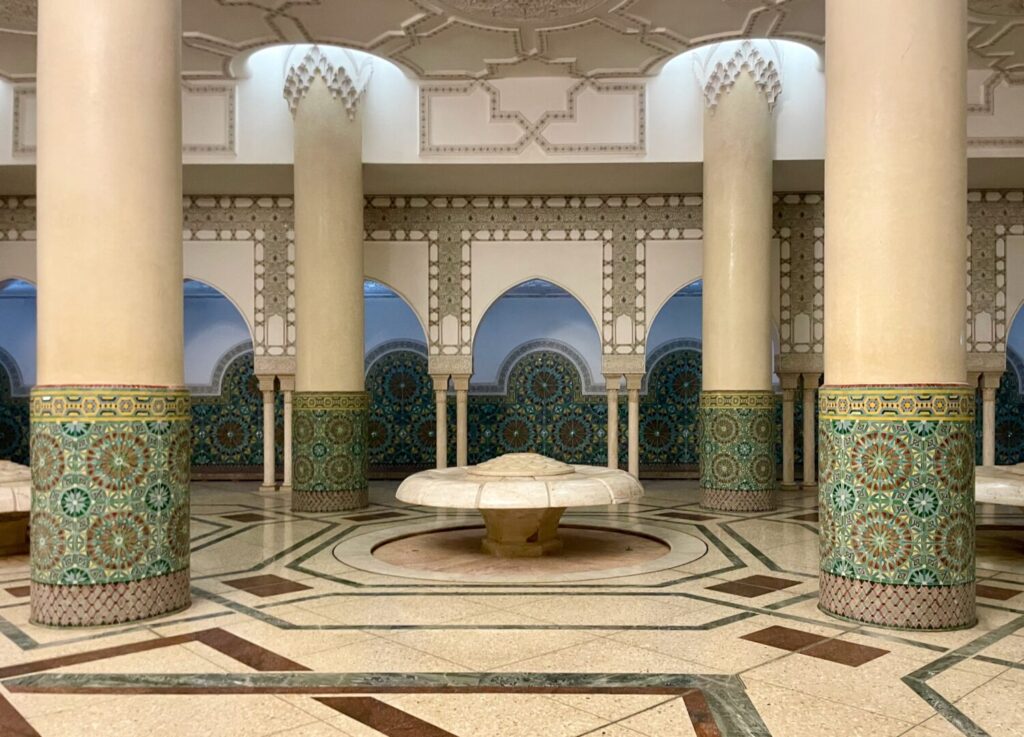
The Museum of the Hassan II Mosque in Casablanca
Inside the Hassan II Mosque complex, the museum offers an overview of Morocco’s traditional craftships that brought the mosque to life. You can enter with the same ticket of the Mosque.
The section on Wood Art showcases the country’s long-standing mastery of carved, painted and inlaid wood. Traditionally carved by hand, cedar wood is decorated with intricate geometric and floral motifs.
In the Plaster Art section, you can discover how gypsum becomes white plaster and then sculpted into geometric, epigraphic and floral designs. I saw this in real life in the Marrakech medina, and it’s totally impressive. This refined art form has adorned Moroccan mosques and palaces since the twelfth century.
The Brass Making display highlights how copper and brass were used in Moroccan architecture, particularly during the Merinid period. Artisans chisel fine patterns into copper sheets. With brass, they create doors, chandeliers and decorative grilles that reflect the brilliance of Islamic design.
Finally, the section dedicated to Tadelakt explains this polished lime plaster technique, still widely used in hammams and riads. Artisans smooth the lime surface with stones and finish it using natural black soap, creating a waterproof, silky sheen unique to Moroccan interiors.
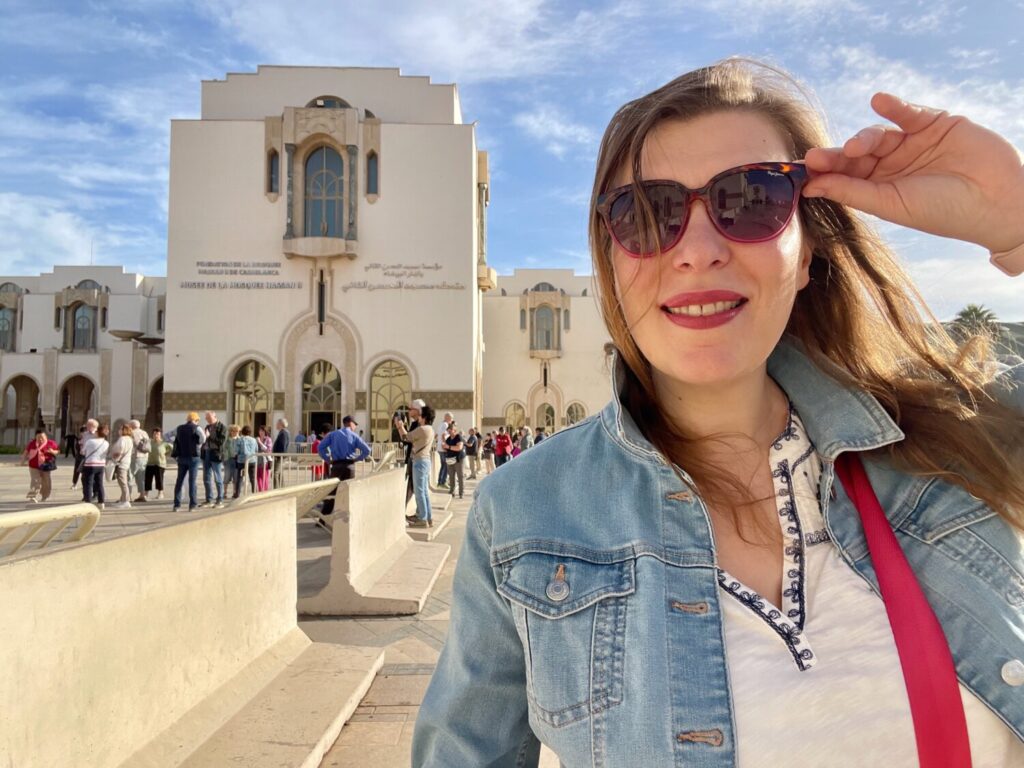
The Medersa and Library of the Hassan II Mosque
On the eastern side of the Hassan II Mosque complex, facing the museum, stand the medersa and the library across the esplanade. These three buildings form the cultural heart of the mosque.
The medersa, or Quranic school, continues Morocco’s long tradition of religious education. Here, students study the Quran, Arabic calligraphy and Islamic philosophy. Next to it, the library preserves religious texts, manuscripts and works on Moroccan heritage.
The Best Kept Secret of the Hassan II Mosque: The Traditional Hammam
Hidden beneath the mosque, at the far end of the esplanade, lies one of Casablanca’s best-kept secrets: the hammams of the Hassan II Mosque. Most visitors are unaware of their existence, often confusing them with the ablution halls. However, there are two hammams open to the public. One for females and one for males, with different entrances.
The complex includes a series of warm, hot and very hot rooms, as well as a seawater hydromassage bath heated pool for each hammam. The atmosphere is the perfect blend of tradition and modern wellness.
Unlike the typical Moroccan hammams, which focus mainly on cleansing with black soap and exfoliation, the female hammam offers a complete spa ritual inspired by the Turkish tradition, including two types of scrubbing, a double savonage and relaxing massages.
The men’s and women’s hammams are always open, including on Fridays. I really recommend not missing this experience in Casablanca, either before or after your visit to the Hassan II Mosque. I booked the traditional ritual myself, and it was an incredibly soothing experience!
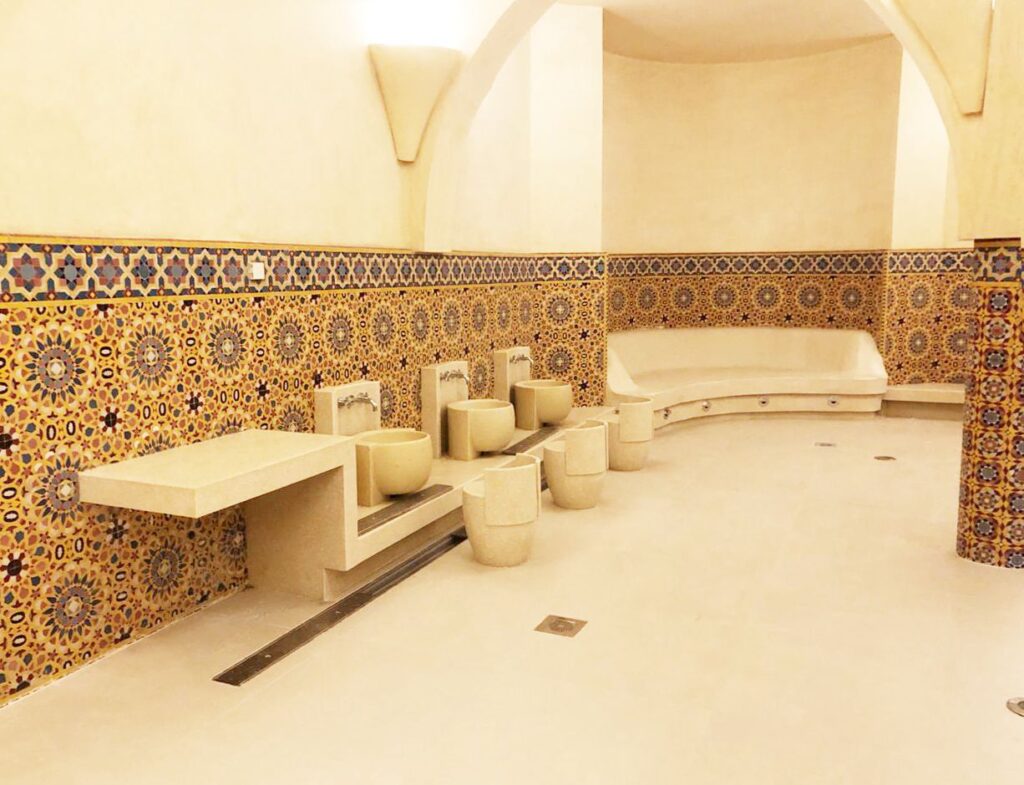
Practical Information for Visiting the Hassan II Mosque in Casablanca
The Hassan II Mosque is one of the few places of worship in Morocco open to non-Muslims. For this reason, it’s a must-see for anyone interested in Moroccan culture and religious architecture.
Visits are only possible with a guided tour, available in several languages, including English, French, Spanish, and Italian. If you visit on your own, you’ll join a small group led by an official mosque guide who explains the history, symbolism and construction details.
There is a large number of visitors every day. The Mosque is one of the most visited attractions in Morocco and a key stop for all organised tours. Despite the crowds, visits are well-coordinated. You have just to follow the group led by the guide who speaks your favourite language.
Admission Fees for the Hassan II Mosque in Casablanca
The entrance ticket for the Hassan II Mosque in Casablanca costs 140 MAD for foreign adults. Children under six enter for free. Kids over six pay a reduced rate, but the official website does not specify at what age visitors are considered adults. The ticket includes access to both the mosque and the museum.
You can buy tickets at the museum ticket office or online, for a small additional fee. I visited the Hassan II Mosque in Casablanca during the first morning tour at 9:00 am. I arrived early, and there was just a little queue, but it was low season. On a later trip, when I just visited the hammam in the afternoon, there were already many more people waiting.
To make the most of your visit, I strongly recommend booking Hassan II Mosque in Casablanca tickets online in advance. It’s something I always do when travelling independently or when I have limited time. It helps avoid long queues and ensures entry to one of Morocco’s most popular landmarks.
Opening Hours of the Hassan II Mosque and Museum
The esplanade of the Hassan II Mosque in Casablanca is always open. You can enter even outside the official visiting hours, as long as you have a valid reason to do so. For example, if you are visiting the hammam. Entry just to take photos is not allowed, and guards will most likely stop you if you do not have a legitimate purpose.
For your visit, keep in mind that the museum of the Hassan II Mosque in Casablanca is open all day from 09:00 to 16:00. Remember that the interior of the mosque can only be visited with a guided tour.
Guided tours of the mosque take place at fixed times throughout the day. From Saturday to Thursday, visits start at 09:00, 10:00, 11:00 and 14:00. On Fridays, tours are available at 09:00, 10:00 and 14:00.
Opening hours may vary or be reduced during Ramadan. It’s always best to check the official Hassan II Mosque website before visiting during this period.
Guided Tours of the Hassan II Mosque: Schedule, Languages and Tickets
You can visit the Hassan II Mosque in Casablanca only with a guided tour, available at a fixed time, except during prayer times. (See Opening Hours for more info). If you arrive early, you can use the time to visit the mosque’s museum, included in the ticket price.
Guided tours are in Italian, Spanish, English, French and Arabic. Upon entering, visitors are divided into groups according to their language. Each group will be assigned an official guide who will lead the tour through the main areas of the mosque.
The tour led you to the prayer hall and to the ablution rooms. It’s a fascinating experience that helps you understand not only the architecture and craftworks, but also the spiritual meaning behind the mosque’s design.
During my visit, our guide was incredibly engaging. He shared many curiosities about the artisans who contributed to the construction, as well as about Muslim religious life, far richer and more nuanced than many Europeans might imagine. If you enjoy the visit, leaving a small tip for your guide at the end of the tour is always appreciated.
Dress Code and Visitor Etiquette at the Hassan II Mosque
The Hassan II Mosque in Casablanca is a place of worship, meditation, and prayer, so visitors should dress and behave respectfully. This is one of the few mosques in Morocco open to non-Muslim visitors, and the experience is even more meaningful when approached with awareness and care.
Before entering, remove your shoes and carry them with you in the small bags provided at the entrance. If you don’t feel comfortable walking barefoot, you can wear socks during the visit. Personally, I was wearing sandals and chose to clean my feet afterwards with disinfectant wipes. For me, it’s a more practical option than keeping used socks in my suitcase for the rest of the trip. Still, many visitors prefer wearing socks. Walking barefoot in public spaces is not something we’re used to in Western culture!
During your visit, wear clothing that covers your shoulders, chest and knees. Shorts, sleeveless tops and tight outfits are not allowed. Long dresses, wide trousers, and light shirts are perfect choices, comfortable and appropriate for the setting. During my visit, I wore a long dress with long sleeves, and it felt both respectful and practical.
If you’re a woman, you don’t need to cover your hair to visit the interior of the mosque. There are many guards, but they’re unlikely to comment on how you’re dressed unless your clothing is truly inappropriate. Morocco is far more open and tolerant than most people imagine before visiting it for the first time. The atmosphere inside the Hassan II Mosque reflects the same welcoming spirit, and the guides are super friendly with tourists.
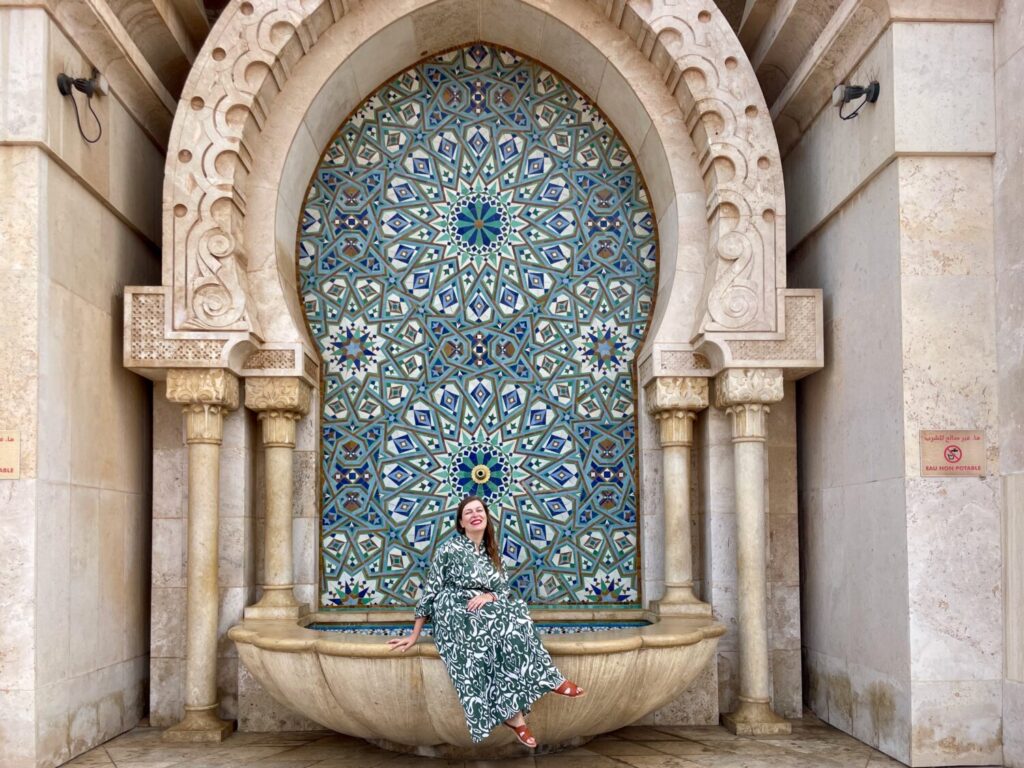
How to Get to the Hassan II Mosque in Casablanca
The Hassan II Mosque rises above the Atlantic Ocean along Casablanca’s Corniche. This site was once home to the Orthlieb Pool, a seawater swimming pool carved into the rocks and popular with locals in the early 20th century.
The Mosque is easily accessible on foot from central Casablanca. You can walk to it if you are staying near the city centre or the Corniche. If you’re staying in a more peripheral area or near the Casa Voyageurs or Casa Port train stations, taking a taxi is the quickest and most convenient option.
Taxis are affordable and familiar with the route. Simply mention Mosquée Hassan II, and every driver will know exactly where to take you.
Nearby Attractions to Visit After the Hassan II Mosque in Casablanca
Casablanca is not just about the Hassan II Mosque. There’s much more to discover if you’re exploring the city independently. After your mosque tour, take a walk along the Corniche, the scenic promenade that runs beside the Atlantic Ocean. It’s the perfect way to admire the mosque from different angles and enjoy the sea breeze.
The Parc de la Ligue Arabe, in the heart of downtown Casablanca, is just about thirty minutes on foot from the mosque. This green oasis is the city’s main park. It’s also a lively meeting spot featuring a skate park and ample space to relax.
If you’re in the mood for shopping, visit Casablanca’s Old Medina. Unlike the crowded souks of Marrakech, here you can browse local goods, crafts and spices at your own pace. Best of all, sellers are quite friendly and not too pushy!
As a history and architecture enthusiast, I particularly loved Villa Carl Ficke, a beautiful Art Deco villa. It houses the Casablanca Memory Museum, focused on the story of the city’s urban development and the fascinating life of its original owner.
Finally, take time to wander through Casablanca’s Art Deco district. Here, elegant façades and vintage signage recall the city’s cosmopolitan past. Don’t miss the Rialto Cinema Theatre, one of the most famous examples of this architectural style. It’s a true icon of Casablanca’s golden age.
Where to Stay in Casablanca
During my first trip to Casablanca, I stayed in a hotel near Casa Voyageurs train station, which is convenient if you’re arriving from the airport by train, as it’s the terminus for direct routes. However, the area is not central and lacks the charm of the city’s main districts.
One thing to keep in mind is that hotel quality in Morocco can be quite inconsistent, regardless of the number of stars. I’ve stayed in places with beautiful rooms but dirty carpeted corridors and disappointing breakfast service, definitely not worth a second visit.
When I travelled alone to Casablanca, I chose to stay somewhere more comfortable and reliable. I booked a room at Hotel Kenzi Basma, a four-star hotel in a central location perfect for walking around the city. It’s just a short distance from the new medina and many of Casablanca’s main attractions.
I highly recommend it for both its excellent location and the impeccable quality of the property itself. If you book a room with a balcony, as I did, you’ll even have a beautiful view of the Hassan II Mosque, which looks spectacular when illuminated at night.
Other good and safe options in the same area include Kaan Casablanca and Mövenpick Hotel Casablanca, as well as international chain hotels. However, always double-check the location before booking and avoid cheap hotel deals unless you’re really travelling on a budget.
Final Thoughts about the Hassan II Mosque
The Hassan II Mosque in Casablanca is more than just an architectural masterpiece. It’s a place where faith, craftsmanship and the Atlantic Ocean meet in perfect harmony. Every element, from the marble floors to the carved cedar ceilings, reflects the beauty and depth of Moroccan culture.
Feel free to share your experience or questions in the comments below if you’ve visited the Hassan II Mosque or are planning to go.
